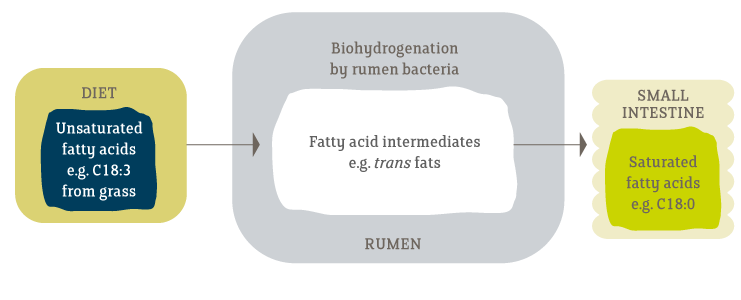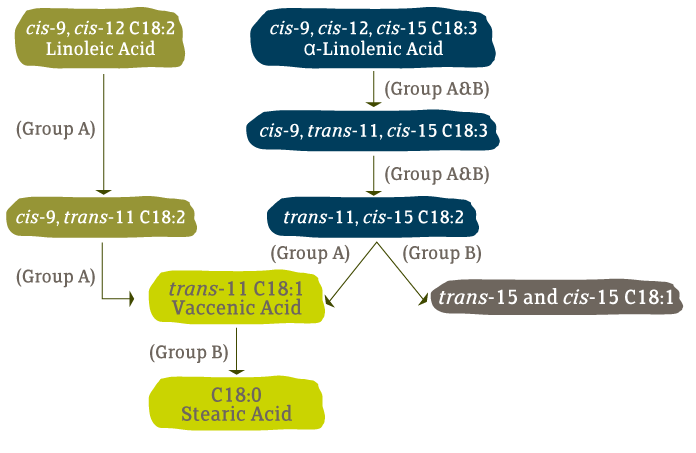Biohydrogenation
Biohydrogenation is a process that occurs in the rumen in which bacteria convert unsaturated fatty acids (USFA) to saturated fatty acids (SFA) and as a consequence, the fatty acids leaving the rumen are highly saturated (Figure 1). Hence, although animals can consume large quantities of USFA from standard feed ingredients, most of these will be converted to SFA in the rumen and so are not available for uptake into milk fat, meat or tissues.
 Figure 1 Biohydrogenation of USFA in the rumen
Figure 1 Biohydrogenation of USFA in the rumen
Linoleic and linolenic acids are the primary substrates for biohydrogenation and data indicate biohydrogenation rates of 70-95% and 85-100%, respectively. Two groups of bacteria are involved in biohydrogenation, classified as Group A and Group B. The pathway of biohydrogenation of linoleic and linolenic acids is presented in Figure 2 (Bauman et al., 2003).

Figure 2 Biochemical pathways for the biohydrogenation of linoleic and linolenic acids in the rumen
The process of biohydrogenation of USFA to SFA involves several steps, resulting in production of many unique fatty acids as biohydrogenation intermediaries, some of which will leave the rumen and be taken up in milk fat. However, some of the trans fatty acid intermediaries formed by biohydrogenation can lead to a major reduction in milk fat production – see section ‘Milk fat depression’ for discussion on effects of trans fatty acids on milk fat production.